Search Results for Tag: Nepal
Still no light at the end of the tunnel
Chautara appears as if the devastating earthquake had hit it recently, not almost eleven months before. About 15,000 people are living in the city at an altitude of 1,500 meters, the administrative headquarter of Sindhupalchowk District, which was particularly hard-hit by the earthquake on 25 April last year. On the main street many ruined houses still witness to the disaster that killed more than 3,500 people in this mountain region. In many villages about 90 percent of the houses collapsed. The cleanup is progressing slowly. Too heavy are the wounds that the earthquake has ripped, not only at the buildings, but also for the city’s inhabitants. “There is still a very great problem of health,” says doctor Sabina Parajuli. “Those who were injured that time, have not fully recovered because of lots of problems, especially in their limbs. They were operated at that time and not able to do their normal activites. They were the only family members with income, but they are not working and are not getting money. And the other family members are busy with taking care of them.” In addition, infectious diseases such as vomiting or diarrhea spread quickly because the people live in crowded shelters.
![]() read more
read more
“We are ready” in Thulosirubari
“They lost their houses and all their property, but they didn’t lose their plans,” says Arjun Gatraj about the people of his native village Thulosirubari. “There is still hope.” Not only for better times for themselves, but also for their children. “They feel that education is important for their children. They sent them directly after the earthquake as soon as we started the school again.” Arjun is the chairman of the school committee of Thulosirubari, a small mountain village, about 70 kilometers from the Nepalese capital Kathmandu. Almost every family has been affected by the earthquake. “75 people died, among them eight of our students”, Arjun tells me during my visit in Thulosirubari. “About 1800 houses were destroyed, only 30 to 40 are still intact.”
![]() read more
read more
Blockade in Nepal declared ended
Two reasons to celebrate in Nepal: Just in time for Losar, the Tibetan New Year, an end of the supply crisis in the Himalayan state is on the horizon. After more than four months, leaders of the Madhesi ethnic group declared their blockade of the border with India ended. The Madhesi, who live in southern Nepal, felt disadvantaged by the country’s new constitution. Meanwhile, it has been changed in some respects. The blockade had paralyzed Nepal. The reconstruction work after the earthquake in spring 2015 had come to a virtual standstill. Fuel and building materials as well as food and medicine had run short because the imports from India had been staying away. Since the weekend, tank trucks are rolling towards Kathmandu again.
![]() read more
read more
Brice: “Easy to make statements and then do nothing”
He is the doyen of the western expedition operators. The New Zealander Russell Brice has been leading expeditions to the Himalayas since 1974. Hardly any of his colleagues has so much experience as the 63-year-old head of Himalayan Experience, not only in organizing trips to the eight-thousanders but also in dealing with the authorities. It is something that has almost been forgotten, that Russell at an earlier age was an excellent high altitude climber – and an Everest pioneer: Along with the Briton Harry Taylor he first climbed the Three Pinnacles on the Northeast Ridge in 1988.
I wanted to know what Brice thinks about the current situation in Nepal:
Russ, for this spring Himalayan Experience is offering expeditions in Nepal to Mount Everest and Lhotse. How great is the demand?
Very small numbers compared to past years.
Do you notice an impact of the events in 2014 (avalanche in Khumbu Icefall) and 2015 (earthquake and avalanche that hit Everest BC) on your client’s attitude?
![]() read more
read more
No prospect of spring fever in Nepal
If there is a season, which stands for optimism, it’s spring: Winter is leaving, it’s getting warmer, brighter, more colorful. This may entice people painting the world more beautiful than it is soberly assessed. Also the people in Nepal long for spring, in the hope of better times. 2015 was a bad year for the country. First the devastating earthquake in spring that killed according to official figures more than 8800 people. And were this not bad enough, the blockade of the border to India, now continuing for almost four months. There is still no sign of spring fever in Nepal.
![]() read more
read more
If savings are made at the wrong end
“I am not in the government to wait and see”, Ananda Prasad Pokharel said in early November after his appointment as the new Nepalese Tourism Minister. “I am here to change.” However, one of his first initiatives concerning mountain tourism doesn’t testify his farsightedness but looks more like a crazy idea. Pokharel’s ministry plans to reduce the insurances for Nepalese staff on expeditions – by up to 60 percent on mountains that are lower than 6,500 meters. Thus mountain tourism should be stimulated again, it said. The visitor numbers in Nepal had slumped dramatically after the devastating earthquake in April and also because of the still existing blockade of the border with India.
Even many Nepalis shake their heads about the government’s plan. “As an owner of the agency Dreamers Destination Trek, I prefer reduction in every kind of insurance. It is good for my company and it is good for my clients”, Mingma Gyalje Sherpa writes to me. “But being myself a climber and born in a climber’s family, I wish an increment of insurances in favor of climbers.”
![]() read more
read more
Luanne Freer: “Doping on Everest not talked about openly”
“Never open your mouth, unless you’re in the dentist’s chair.” These were the words Salvatore Gravano called “Sammy the Bull”, a mafioso from New York, used to describe the “Omerta”: the unwritten law of the underworld to be silent no matter what happens. Even athletes using doping substances usually say nothing unless they are found to be guilty. In this respect, mountaineering is not an “island of bliss”. Anyone who has ever been on expedition has probably met some climbers who carelessly use medicine that actually should be used in case of emergency – or even performance enhancers. Just nobody of these climbers admits to do so. Luanne Freer is the “Everest doctor”. For twelve years, she has treated climbers in “Everest ER”, the emergency room at the Base Camp on the Nepalese side of the highest mountain on earth. I asked the 57-year-old about her experiences on the topic of doping on Mount Everest.
Luanne, in 2003 you founded “Everest ER”, the highest infirmary in the world. Since then, you have spent many climbing seasons in Base Camp. How widespread is doping among Everest aspirants?
![]() read more
read more
Dawa Steven Sherpa: “Chances are running out”
It’s five to twelve, maybe later. Time is running out to tackle man-made climate change. The impacts of global warming can be observed also in the Himalayas, gpt instance in Nepal. “Largely because of climate change and the recent impacts of the earthquake and aftershocks, Nepal has entered an era of accelerated catastrophic events that will impact the country’s population, their lives and livelihoods for several years to come”, US and local scientists said after having researched the greatest and most dangerous glacial lakes in Nepal after the devastating 25 April earthquake.
In these days, delegates from all over the world are debating a new climate change agreement in Paris. On this occasion, I called Dawa Steven Sherpa in Kathmandu. Along with his father Ang Tshering Sherpa, the president of the Nepal Mountaineering Association (NMA), the 31-year-old is managing the expedition operator “Asian Trekking”. Dawa Steven scaled Everest twice (in 2007 and 2008) and in addition the eight-thousanders Cho Oyu (2006) and Lhotse (2009). For years he has been engaging for environmental and climate protection. He is a climate change ambassador for WWF.
![]() read more
read more
Fowler: “No thoughts of giving up yet!”
Real adventurers should be young? Fiddlesticks! The Briton Mick Fowler and his long-time climbing partner and compatriot Paul Ramsden prove that you can do extremely ambitious climbs in the Himalayas even if you are older than 50. Mick is going to celebrate his 60th (!) anniversary next year – unbelievable! Many young climbers would turn green with envy comparing their efforts with Mick’s and Paul’s achievements in recent years. Again and again they succeed in first climbing amazing routes on six-thousanders in Nepal, India, China or elsewhere. They were already awarded the Piolet d’Or, the “Oscar for climbers”, twice: in 2003, for their new route through the North Face of the 6250-meter-high Siguniang in western China and in 2013, for their first climb of the Northeast Ridge of the 6142-meter-high Shiva in the Indian state of Himachal Pradesh. And they have a good chance to win the Golden Ice Axe for the third time – for their latest expedition. This October, Mick and Paul completed the first ascent of Gave Ding, a six-thousander located in a very remote valley in far west Nepal.
Mick, year after year you and your climbing partner Paul Ramsden discover ambitious new mountains or routes, tackle them and succeed. What is your secret of success?
Lots of hard research, a good partnership and a shared approach of not retreating unless there is a very good reason to do so.
![]() read more
read more
Next summit attempt on Lhotse
Will there be another successful eight-thousander expedition at the end of this fall season in Nepal? Actually, we can answer this question with Yes. Because it already deserves a big round of applause what the South Korean Sung Taek Hong and his team of four Sherpas have achieved so far under difficult conditions in the South Face of 8,516-meter-high Lhotse. In strong winds, the five climbers opened a partially new route up to an altitude of 8,200 meters. Two summit attempts failed: the first at 7,850, the next at 8,000 meters. This weekend Sung and Co. will set off again. If everything goes well this time, they could reach the highest point on Thursday of next week. But this is anything but self-evident.
![]() read more
read more
The tireless weatherman
“I’m retired, but not tired or unhappy”, says Karl, called “Charly” Gabl. “You should not slow down from hundred to one. As on the road, that would be fatal.” Four years ago, the Austrian meteorologist retired, but the 68-year-old weatherman is still advising many professional climbers during their expeditions in the Himalayas or Karakoram. “I’m doing this voluntarily. For example last summer, I advised the Huber brothers on Latok I where they did not succeed due to the warm weather and were almost killed by an ice avalanche”, Gabl told me when I met him at the Alpine Trade Fair in Innsbruck last weekend.
![]() read more
read more
Auer: “Everything else becomes unimportant”
Anyone who has ever climbed a very high mountain knows about the dangers during the descent. Not the dangers of the mountain itself, but of your own body. Suddenly all adrenaline is used up, you feel the pain that you have pushed away during the ascent, you are exhausted, only want to get down quickly and run into danger of losing your concentration. It’s not for nothing that many accidents happen on descent – like on the 6,839-meter-high Nilgiri South in Nepal, where the Austrian Gerhard Fiegl fell several hundred meters into depth on Monday of last week and has been missing since then. As reported, the search for the 27-year-old was meanwhile abandoned.
According to the other two team members, Hansjoerg Auer and Alexander Bluemel, the trio earlier had “successfully reached the summit after climbing through the more than 1,500 meter high South Face”. It was the first climb via the difficult wall where several other expeditions had failed in the past few decades. At the summit they noticed that their friend Gerry was “very exhausted”, Hansjoerg and Alex say. Was it symptoms of High Altitude Sickness? Fiegl’s rapid drop in performance might indicate this. At that altitude, oxygen is pressed into the longs with around 40 percent less pressure than at sea level.
![]() read more
read more
Search for Gerry Fiegl abandoned
The worst fears turned into sad certainty. The Austrian climber Gerhard called “Gerry” Fiegl will not return. Reiner Gerstner, company spokesman for the outdoor sporting goods manufacturer Salewa, informed me, that the search for the missing 27-year-old was abandoned: “According to information from Nepal there is no longer any hope to find Gerry still alive.” In recent days, up to one and a half meter of fresh snow had fallen in the Annapurna region, Gerstner said. Last week on Monday, on the descent from the 6,839-meter-high Nilgiri South, Fiegl had fallen several hundred meters into depth. Previously Gerry – along with his compatriots Hansjoerg Auer and Alexander Bluemel – had first climbed the difficult South Face of the mountain where several expeditions had failed in past decades. “So an until then successful expedition came to a tragic end”, said Gerstner. “We mourn the death of a friend. Gerry was one of the best.”
![]() read more
read more
Mingma Sherpa: “It was my worst mistake”
No trace of euphoria. On Wednesday last week, Mingma Gyalje Sherpa reached – as reported in my blog – the 6,685-meter-high summit of Chobutse in Rolwaling Valley in Nepal, solo climbing and for the first time via the West Face – a milestone in the history of Sherpa climbing. But instead of being cheerful the 29-year-old is simply happy that he survived his solo ascent.
Mingma, you have already been on top of Mount Everest, K 2 and five other eight-thousanders. How challenging was your solo ascent on Chobutse?
I have climbed Everest with bottled oxygen and the other six 8,000-meter- peaks without the use of oxygen. When I climbed these high mountains, I did it with partners and on routes with fixed ropes. But a solo ascent means climbing alone in free style, there isn’t any fixed rope or climbing partner to save you if you make a mistake. A mistake means the end of your life. So it is itself challenging. It took me three years to decide to go for a solo climb. Finally, I made it this year. Climbing Chobutse was my worst decision and mistake. I almost lost my life. After my summit success, I spent two nights and days without food, water or tent. I spent two threatening nights and a day at the same place in a whiteout waiting for the weather to clear up. My only satisfaction is that I made it to the summit, though it was the hardest climb of my life.
![]() read more
read more
Turning point in Sherpa climbing history
The next Sherpa coup in the Himalayas, again in Rolwaling Valley. After Nima Tenji Sherpa, Tashi Sherpa and Dawa Gyalje Sherpa – as reported – had first climbed three six-thousanders within three days at the beginning of October, Mingma Gyalje Sherpa now succeeded in doing an amazing solo ascent. The 29-year-old stated that he reached the 6685-meter-high summit of Chobutse (also called Tsoboje) climbing alone and for the first time through the West Face. He had two cold bivouacs in the wall causing frostbite at his leg. Chobutse was first climbed by the Germans Wolfgang Weinzierl, Peter Vogler, Gustav and Klaus Harder in spring 1972, via the Northeast Ridge. Several attempts to climb through the West Face had failed.
![]() read more
read more



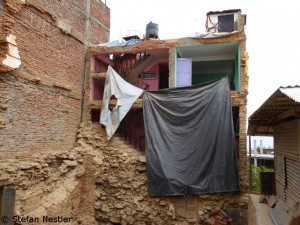

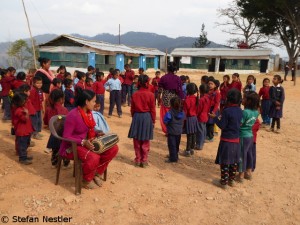
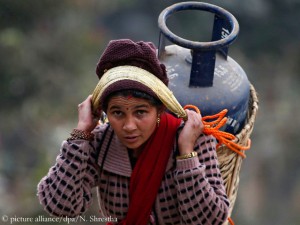
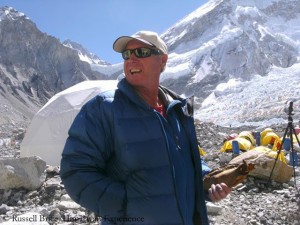
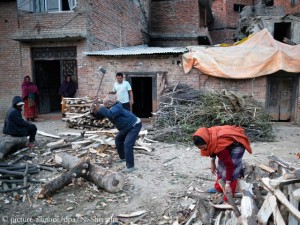
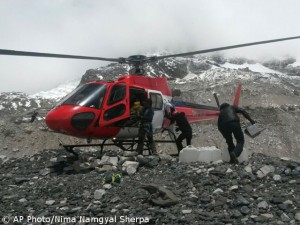
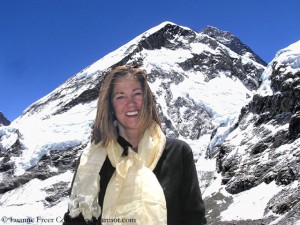
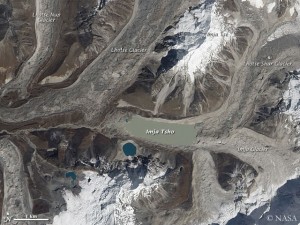
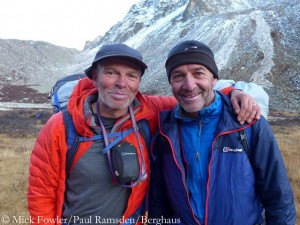
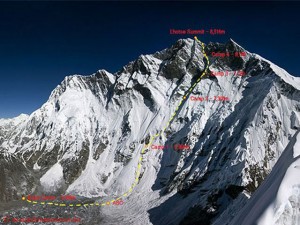
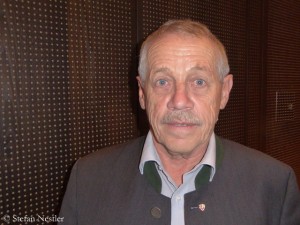

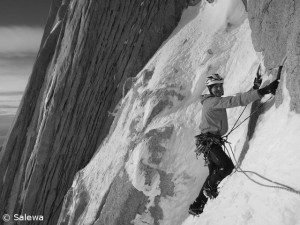
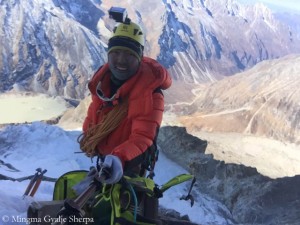
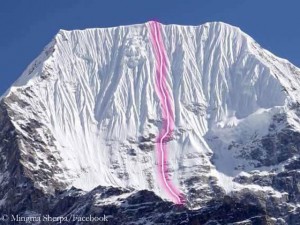





Feedback